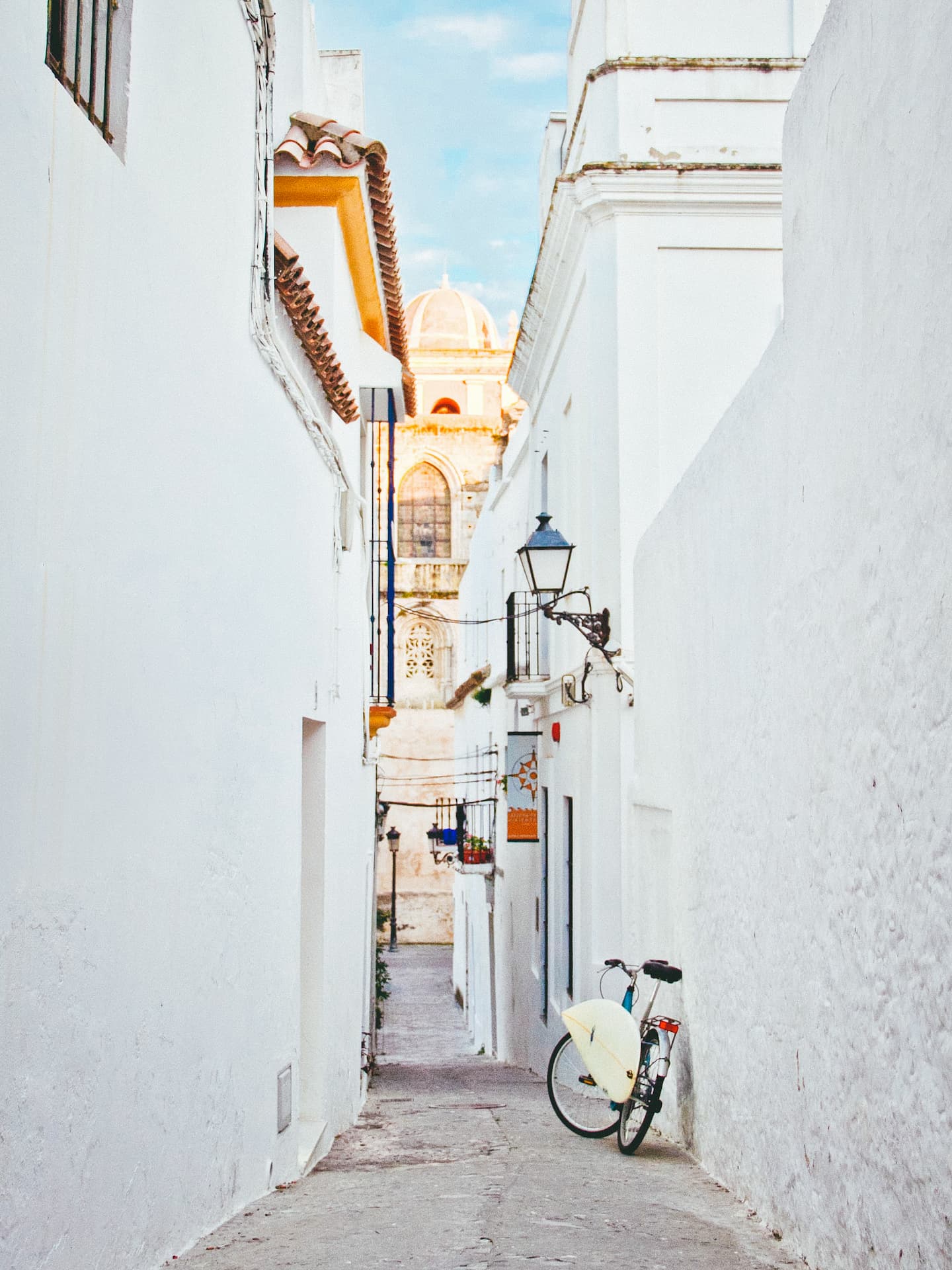Tarifa Old Town
DECLARED A HISTORICAL – ARTISTIC COMPLEX
The city of Tarifa has been declared a historical-artistic complex. You can find many corners and details that will attract you.
The wall has marked its limits until recently, since the first neighborhoods that emerged outside the walls were demolished during the Napoleonic invasion so as not to compromise the defense. With a few exceptions, the complex has not suffered irrecoverable damage, and numerous traditional dwellings are preserved, always with an entrance hall and patio structure, around which the space is organized. Many are Baroque buildings, in which the courtyard arches rest on both stone columns and octagonal brick pillars, and many others are built in the 19th century. They are usually open, but the visitor must bear in mind that they are inhabited, since Tarifa is a living city. These are usually narrow and often with bends, so that the wind is avoided. There are several main arteries that run through the city. In the upper part, the main access is the Puerta de Jerez, and from it, parallel to the wall, runs the beautiful Calle Silos, named after the presence of the old Cilla Decimal, in which the tithes paid to the church of the crops in the area. Today it retains its beautiful barrel-vaulted naves, which house an art gallery and a restaurant. On its other side is Calle Cilla, which makes its way into the wall through the Boquete de la Cilla, cut down to the bedrock, from which the name Calle Peñita also comes.
The straightest way to go down to the city can be taken along Calle Nuestra Señora de la Luz, with several notable buildings, or along the almost parallel Calle Jerez, narrower and cozier. We will stop at Sancho IV el Bravo street, known by the people of Tarifa as La Calzada. Its shape, sometimes winding, is due to the fact that it is built on the old bed of the stream that used to cross the lowest part of the town. It was saved by several bridges, until it was diverted and covered at the end of the 19th century, as it was a source of unhealthiness and the danger of flooding, although some have still occurred, the last one in 1970. In it we can find the church of San Mateo, and also some of the most traditional businesses in town. The whole environment has many details to discover, such as Azogues street, with some of the oldest civil buildings in Tarifa. From there we can continue through Coronel Moscardó Street – where we find the Municipal Exhibition Hall in the Royal Prison – towards Plaza del Mesón, with its fountain, which was the first built in Tarifa, in 1831, and which opens to Guzmán el Bueno and Aljaranda streets, whose houses are attached to the castle and the walls, and from there towards Miramar, with a fantastic views of the Strait. A little further on is the Plaza de Santa María or “de las ranitas”, by the fountain. In it we find the Town Hall, the Pósito, from the 18th century, and the old Miguel de Cervantes school group, today the Library, one of the three buildings built in the neo-Mudejar style around 1924, under the Dictatorship of Primo de Rivera.

